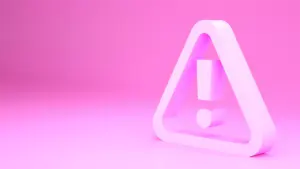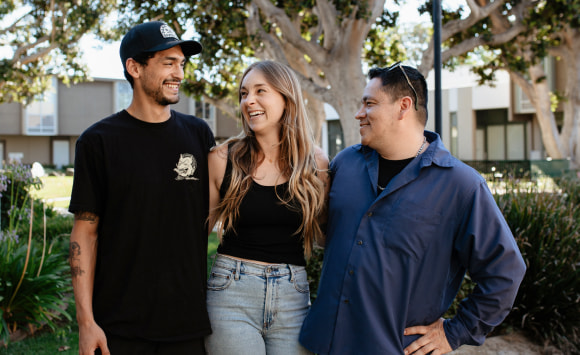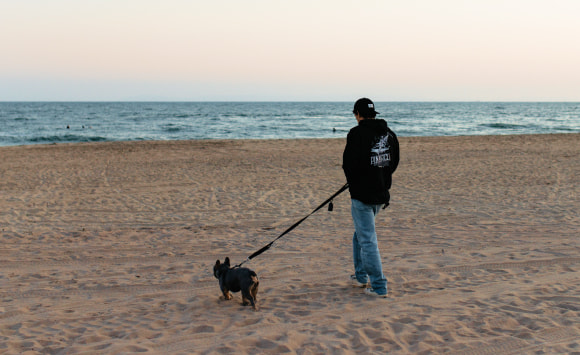Have you ever wondered why you act a certain way in relationships and asked yourself, “What attachment style am I?” Some people keep their distance, while others seek constant comfort due to past experiences.
Your attachment style affects your friendships, romantic relationships, and even how you see yourself. The good news? You can learn about it and make changes if needed.
Read below to discover the four main attachment styles, how to identify yours, and ways to build healthier relationships.

What Are Attachment Styles?
Your attachment style is the way you connect with others in relationships. It comes from your earliest emotional bond, usually with the person who took care of you the most as a baby. This is often your birth mother, but it can also be another caregiver.
Researchers have studied attachment for over 50 years. They’ve found that the way your caregiver treated you as a baby can shape how you relate to people later in life, especially in romantic relationships.1
If your caregiver was loving, attentive, and reliable, you probably learned that relationships are safe and stable. But if your caregiver was distant, inconsistent, or emotionally unavailable, you might have developed an attachment style that makes relationships feel harder. You may struggle with trust, fear being abandoned, or avoid getting too close to people.
This idea is known as attachment theory, and it helps explain why some people feel secure in relationships while others feel anxious or distant.
The Four Main Attachment Styles
The most famous study on attachment happened in 1969. It was called the Strange Situation experiment, developed by American-Canadian psychologist Mary Ainsworth (1913-1999).2
In this study, babies played in a room with their mothers. Then, the mother left for a few minutes and came back. Researchers watched how the babies reacted.
There are four main types of attachment styles based on the study:
1. Secure Attachment
If you have a secure attachment style, you feel comfortable getting close to others. You trust people, and you don’t worry too much about being abandoned. You can rely on your partner, and they can rely on you. When problems come up, you handle them with open and honest communication.
Signs of a secure attachment:
- You feel safe and valued in relationships.
- You trust your partner and believe they care about you.
- You can express your feelings without fear.
- You handle conflicts in a healthy way.
2. Anxious-avoidant Attachment
If you have an anxious attachment style, you may worry about being left or not being loved enough. You might need a lot of reassurance from your partner to feel secure. You crave closeness but sometimes feel like your emotions are overwhelming.
Signs of an anxious attachment:
- You often worry your partner will leave you.
- You need frequent reassurance that you’re loved.
- You feel insecure if your partner is distant.
- You can become clingy or overly emotional in relationships.
3. Anxious-ambivalent Attachment
If you have an avoidant attachment style, you value independence over closeness. You might feel uncomfortable depending on others or opening up emotionally. You may avoid deep emotional connections because they feel too risky.
Signs of an avoidant attachment:
- You feel uncomfortable with too much closeness.
- You prefer to rely on yourself rather than a partner.
- You pull away when someone tries to get too close.
- You may struggle to express your emotions.
4. Disorganized/Disoriented Attachment
If you have a disorganized attachment style, relationships may feel confusing. You want closeness, but you also fear getting hurt. This can cause mixed signals; sometimes you seek love, and other times you push people away.
Signs of a disorganized attachment:
- You feel both drawn to and afraid of intimacy.
- You have trouble trusting others.
- Your emotions in relationships feel unpredictable.
- You may switch between being clingy and distant.
Knowing your attachment style is the first step toward improving your connections with others.
How to Identify Your Attachment Style
Figuring out your attachment style can help you understand why you act the way you do in relationships. Answering these questions can help you see patterns in how you connect with others.
Self-Reflection Questions to Ask Yourself
Here are some simple questions to think about:
- Do you feel safe and comfortable depending on others?
- When your partner is distant, do you feel anxious or insecure?
- Do you avoid deep, emotional conversations?
- Do you sometimes push people away even when you want love?
- Do you feel both a strong need for love and fear of getting hurt?
Your answers can give you clues about your attachment style. But if you want a clearer idea, try the short quiz below.
Attachment Style Quiz
Choose the answer that sounds most like you:
1. When your partner is busy or doesn’t reply right away, you:
A) Feel fine and trust they’ll respond when they can.
B) Worry that they might be losing interest in you.
C) Don’t mind because you like having space.
D) Feel both anxious and upset but don’t know how to react.
2. In relationships, you prefer to:
A) Be close but still have independence.
B) Be very close and need a lot of reassurance.
C) Keep some emotional distance.
D) Get close but also fear being hurt.
3. When someone tries to get emotionally close to you, you:
A) Feel comfortable and open to it.
B) Feel excited but worry they might leave you.
C) Feel uncomfortable and prefer to keep your space.
D) Want closeness but also feel afraid of it.
4. If a relationship ends, you:
A) Feel sad but trust you’ll heal and move on.
B) Feel devastated and wonder what you did wrong.
C) Feel relieved and enjoy being independent again.
D) Feel confused and struggle to understand your emotions.
5. When conflicts happen in relationships, you:
A) Talk through them calmly and openly.
B) Feel upset and fear your partner might leave you.
C) Try to avoid the issue or shut down emotionally.
D) React in different ways, sometimes pushing away and other times clinging.
Quiz Results
- Mostly A’s: You likely have a secure attachment style. You trust others and feel comfortable in relationships.
- Mostly B’s: You may have an anxious-avoidant attachment style. You crave closeness but often feel insecure.
- Mostly C’s: You might have an avoidant-ambivalent attachment style. You prefer independence over deep emotional connection.
- Mostly D’s: You could have a disorganized/disoriented attachment style. You want love but also fear it.
What Now?
Your attachment style isn’t permanent! If you struggle with insecurity or fear in relationships, learning about attachment can help.
Can Your Attachment Style Change?
Yes, your attachment style can change! The way you connect with others isn’t set in stone. It develops based on your early experiences, but it can shift over time.
- Healthy relationships – Being with a supportive and caring partner can help you feel more secure.
- Therapy and self-work – Learning about your patterns and working on them can improve the way you connect with others.
- Life experiences – Overcoming challenges, healing from past hurts, or gaining confidence can shift your attachment style.
- Personal growth – Practicing self-love, setting boundaries, and trusting others can make relationships feel safer.
Seeking Support and Improving Your Attachment Style
If you struggle with trust, fear of rejection, or avoiding closeness, don’t worry; it’s possible to change.
Some steps you can take include the following:
- Paying attention to your patterns – Notice how you react in relationships and why.
- Challenging negative thoughts – If you fear abandonment or rejection, ask yourself if those fears are based on past experiences rather than the present.
- Communicating openly – Healthily express your needs and feelings.
- Building healthy relationships – Surround yourself with supportive people who respect and care for you.
- Considering therapy – A therapist can help you understand your attachment style and work toward change.
Changing your attachment style takes time, but small steps can lead to big improvements.
South Coast Counseling is here to support you with expert guidance and tools to help you build stronger, healthier relationships. Contact us today and take the first step toward a more secure and fulfilling life!

Sources
- Sroufe, L. A. (2021). Then and now: the legacy and future of attachment research. Attachment & Human Development, 23(4), 1–8. https://pubmed.ncbi.nlm.nih.gov/33871327/
- Ainsworth, M. D. S., & Bell, S. M. (1970). Attachment, exploration, and separation: Illustrated by the behavior of one-year-olds in a strange situation. Child Development, 41(1), 49–67. https://www.jstor.org/stable/1127388







